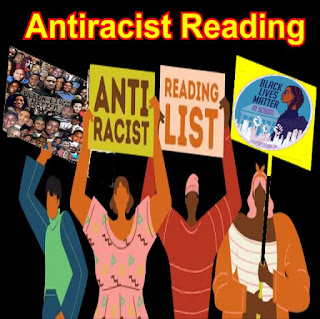Antiracist Reading
Shortly after George Floyd was murdered, openly, in front of the nation’s eyes, Tre Johnson said this, in the Washington Post:
‘when things get real — really murderous, really tragic, really violent or aggressive — my white, liberal, educated friends already know what to do. What they do is read. And talk about their reading. What they do is listen. And talk about how they listened.
What they do is never enough. This isn’t the time to circle up with other white people and discuss black pain in the abstract; it’s the time to acknowledge and examine the pain they’ve personally caused. Black people live and die every day under the burdens of a racism more insidious than the current virus that’s also disproportionately killing us. And yet white people tend to take a slow route to meaningful activism, locked in familiar patterns, seemingly uninterested in really advancing progress.’
You should read all of what he said. Because it’s important. And while you’re at it, take a look at this, as well:
‘while the crafters of anti-racist reading lists are mostly making an earnest effort to educate people, literature and dialogue cannot supplant restorative social policies and laws, organizational change, and structural redress. When offered in lieu of actionable policies regarding equity, consciousness raising can actually undermine Black progress by presenting increased knowledge as the balm for centuries of abuse.’
So—I realize that I am, relative to the antiracist discourse happening right now, at square one or two, and can’t read myself into full partnership. I have to act.
Mentioning things I used to do, in the classroom, would be nothing more than empty CONTINUE READING: Antiracist Reading


